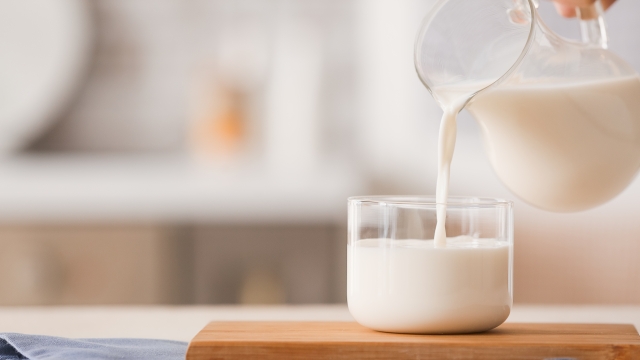From a cow’s udder to the box outside your house, milk has long been a favorite beverage choice. But why did milk become a go-to drink for Americans? And is its popularity beginning to spoil? Here's a skim history, if you will, with the help of some milk experts.
"There is some history of milk consumption going back thousands of years," said Walter Willett, Professor of Epidemiology and Nutrition at Harvard University.
Yes, but modern milk consumption is a product of the last 150 years.
"Milk becomes popular in the United States in the late 19th and early 20th century as a result of women shifting away from feeding infants at home," said Kendra Smith-Howard, author of "Pure and Modern Milk: An Environmental History Since 1900" and Associate Professor of History at the University of Albany.
"Sometimes women were unable to feed their children with their own bodies and therefore were turning to the cow's milk," said E. Melanie DuPuis, author of "Nature's Perfect Food."
This trend popularized milk not just for infants but for kids of all ages. American efforts during World War I contributed to increased milk production too.
According to Federal Reserve records America exported more than $79 million worth of condensed milk overseas between 1915 and 1918.
"At the end of the war, there's overproduction and they're really in economic trouble. So this is really a time when the government is stepping in," DuPuis said.
It's also around this time the nutritional benefits of milk are discovered and emphasized.
SEE MORE: Hidden Valley and Van Leeuwen launch ranch-flavored ice cream
"In the 1910s and 1920s, the United States Department of Agriculture really emphasized that milk was a nutritionally complete food, that it had the appropriate level of fats and proteins and sugars all in one component," said Smith-Howard.
It even became a national symbol of sorts.
"Milk then starts to become associated with Americanness, rght, as a kind of almost a patriotic food that 'if you feed milk to children, they will become Americans,'" DuPuis said.
Milk consumption continued to increase — thanks in part to government promotion and backing.
"There's a very disproportionate political influence, when you stand back and look at the big picture, that is very supportive of milk," Willett said.
By 1945, the average American was drinking 720 cups of milk annually. But despite continued backing by the dairy industry and the Department of Agriculture, Americans began to consume less milk in the second half of the 20th century.
According to the USDA, Americans drank almost a cup of milk per day in 1970, a figure that was down almost 50% by 2010.
"One of the most important things is probably just a changing lifestyle of consumers," said Mark Stephenson, former Director of Dairy Policy Analysis at the University of Wisconsin-Madison. "Now our meal preferences tend to be grab and go and quick and easy, and milk doesn't fit. Beverage milk doesn't fit that lifestyle quite as well."
Dairy farmers point to growing competition from alternative milk options, but data doesn’t fully support that.
"This was way before plant milk," DuPuis said.
USDA research notes plant-based milk options are a contributing factor — but not a primary driver — of declining sales of cow’s milk.
According to data from Information Resources Inc., dairy milk sales topped $15.7 billion in 2022. Plant based milks combined for just $2.4 billion in sales. This means dairy milk is still king, and a cash cow, even if its popularity is beginning to expire among some.
Trending stories at Scrippsnews.com



